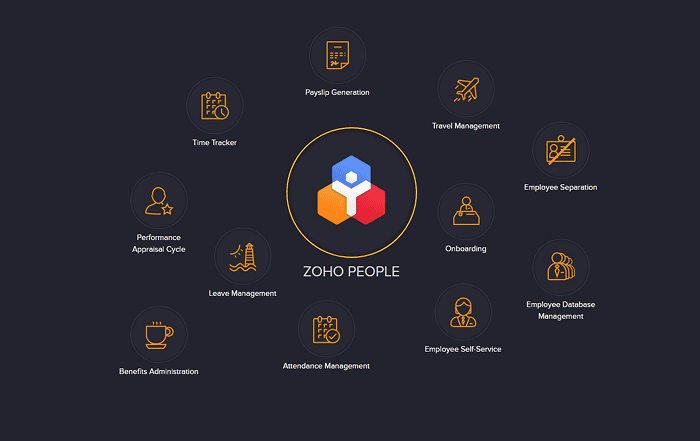
It’s no secret that the digital marketing landscape is a broad sector that needs you to have a good grip on different variables to be on a better end. SEO, also known as search engine optimization, is a critical aspect of the digital marketing sector. If you want to boost the performance of your business in the current business world, you cannot miss focusing on the ability of SEO to place your brand at the top of the search engine.
Approximately 57% of digital marketers say that SEO is one of the key areas contributing to their business success. The above research reports indicate that if you channel your focus on working on your SEO strategy, you stand a better chance of attaining excellent business success. However, you need to utilize different SEO strategies to elevate your business’s ranking across the search engine.
Rather than leading more visitors to your business site and enhancing the search engine rankings, SEO goes the extra mile to ensure that your business brand appears on the first search results when potential customers search for various products and services. This increases your chances of getting potential clients from different parts of the globe without struggling to get things running.
Even though most people have seen the power of SEO in transforming business performance, many are not yet come to terms with the fact that data visualization can be used to enhance the success of SEO strategies. Before you even think of implementing data visualization in your SEO activities, you need to understand its functionality to master how it operates. You need to understand how to play around with different aspects revolving around visualization to add weight to your search engine rankings.
SEO Data
If you have a clear understanding of how SEO operates to enhance your business site’s ranking, it’s high time that you need to learn about SEO data. Despite the impact of SEO data on the success of businesses, many people still neglect it. SEO data has a considerable effect when doing keyword research for your content marketing activities.
In addition, when evaluating the keyword research volume, you can’t neglect using this crucial element. Remember that the keyword research volume refers to the total number of times prospects have been searching a particular keyword within a specific time frame. This figure represents the number of people who seem to be interested in a particular keyword.
Besides, this aspect also contributes to the organic traffic you record depending on the performance of your business site. This can be translated to the general number of people who visited your site within a particular time frame. The loading speed of your website pages is another crucial element that is meant to determine whether your site is reliable or not. Always remember that clients do not have the whole day to wait for your website pages to load for them to get the information they want or even make purchases.
Also, the speed at which your pages load is likely to affect the general ranking of your business website on the search engine. SEO data also affects the organic ranking of your website. Remember that this is an entirely different thing from organic traffic. However, all two aspects are likely to affect your site’s performance in terms of rankings.
When your prospects realize that your content seems more helpful, they will likely prioritize your site compared to your competitors since you offer real value to them. Furthermore, the more backlinks you have, the more your site performs better and stands at the top of the search engine. The secret to having more backlinks is ensuring multiple websites that refer back to your site. This will trigger your organic ranking and take your business performance to the next level.
At this point, we need to answer the big question of how you can use data visualization to improve your SEO strategy. Let’s dive into the details!
How to Improve SEO with Data Visualization?
Data visualization is accompanied by multiple features such as scatter plots, graphs, and charts. These features that work hand in hand with data visualization are said to significantly impact interpreting technical data jargon. Remember that when running a business, you will generate data that needs to be presented to your audience.
This is where you use data visualization to analyze the data and generate a simplified format that you can present to your audience. When working on your SEO strategies, you can use a graph to outline the keyword research volume of different keywords you intend to use in your content marketing activities. Also, if you have conducted a detailed analysis of your business operations, you can use a Sankey diagram to present the report.
Rather than dealing with bulky sets of data, you can decide to convert them into small data insights that you can easily manage to analyze and generate conclusions from it. If you present data in its simplest format, your audience gets it easy to grasp the intended message creating a better connection between your business and the market audience.
Besides, the information presented in text content tends to be boring, and many people neglect it. When you incorporate a few visuals such as infographics, graphs, and charts like a bar chart, or Sankey diagram into the data, you grab your audience’s attention, enabling them to read and analyze the content more easily. Note that everybody on the web constantly searches for interactive content that offers real value to help them solve their problems.
Ensure that every word outlined in your content impacts the message you intend to deliver to your readers. When your audience realizes that the content you create offers value, they will automatically rank your site among the best. They will always prefer reading content from your business website, which will enhance the success of your business.
Presenting Keyword Research Data
Keyword research sounds to be an easy task if you haven’t begun doing it. This does not mean that you cannot do keyword research. You only need to have some basic skills in this field that will enable you to navigate through the process. After the process, you need to clearly outline the data you generate to make it easily digestible during content creation.
The data you generate from your keyword research activities is the only weapon you have that can help you transform your business. To make it easier to understand, you can utilize a graph to present the search volume for every keyword you intend to use to avoid confusion during the process.
Comparing the Organic Ranking with Your Close Competitors
If you are working on SEO strategies for your business, you also need to have one eye looking at what your competitors are doing to perform better. Checking on what your close competitors are doing will help you understand the areas you need to improve on and what makes you stand out across the industry. However, making this come true requires you to understand your top competitors within the business industry clearly.
Once you look at what your competitors are doing, you will be better positioned to understand what sets you apart from them. If you learn from them what they are doing, then you can modify your strategy and elevate your business performance.
Conclusion
SEO serves as the backbone of all content marketing strategies. Researchers say that 68% of the online experience begins with a better search engine strategy. When creating reports for your readers, you should never forget about analytics and reporting as one of your basic strategies to elevate your business to the top. The fan facts outlined in this article can help you understand how you can capitalize on data visualization to transform your SEO strategies.







